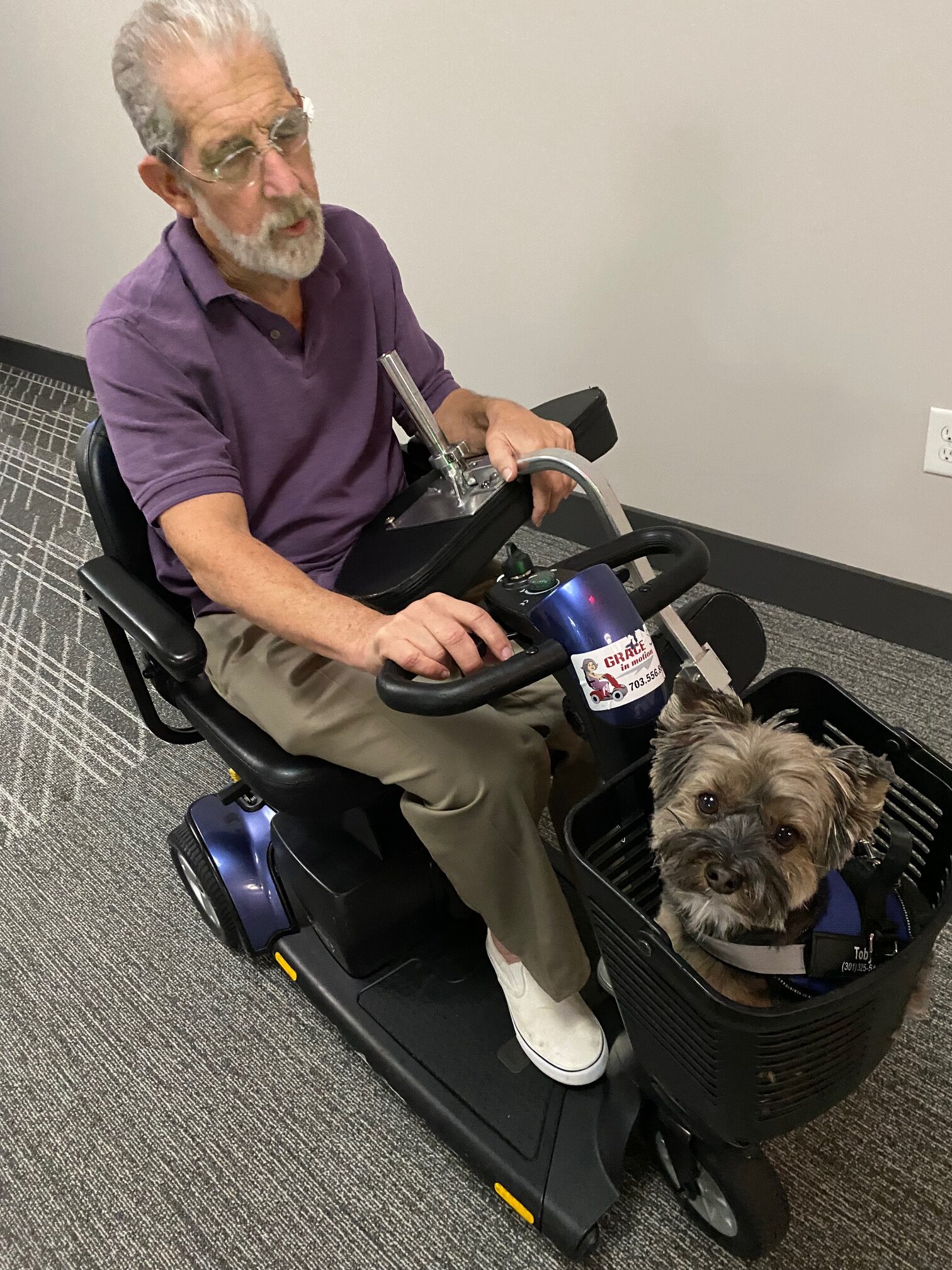“When is the right time to get a mobility scooter?”
It’s a question I often see as I browse social media sites frequented by people with multiple sclerosis (PwMS). Sometimes the person is asking about a cane, a walker, or a foot brace, but the concerns are the same: will it really help me, is it going to make me look too disabled and, sometimes, can I afford it?
My simple answer is: The right time to get any kind of an assistance device is whenever it will make your day easier…whenever it improve the quality of your life.
Over my nearly 44 years living with MS I’ve progressed from a cane, to an ankle-foot orthosis (OFO), to a functional electrical stimulator (FES), to a scooter. I had each of those concerns for each device and I’m glad I overcame them.
Canes
One too many falls lead me to my first cane. I was embarrassed to use it, especially at work, so I bought the metal fold-up type which I carried to work in my briefcase. I unfolded it and used it to walk between the parking lot and the platform at the train station near home and between the station at the other end and my office.
Then, one day I took a particularly hard tumble at work. That’s when I started using the cane around my coworkers. After I “went public” my wife started buying me handmade wooden canes at craft shows. They looked snazzy and were great conversation starters. But as my disability increased, I found myself placing more of my weight on the cane and two of the wooden canes broke. I decided utility and safety needed to trump appearance and I returned to metal.
Today, my MS has reached the point where I use two Dynamo Swing Canes. These are metal with a flat, 6-inch rectangular base made of hard rubber. That base provides extra stability and does a very good job of not sliding on wet floors. The handle grip precedes the cane’s shaft, which is the opposite design of other canes. It’s odd at first, but I quickly became used to it. The shaft also bends slightly. These two features are designed to create a neutral point of balance, which is supposed to make users more stable when walking.
I think it works.
AFOs and FESs
An ankle-foot orthosis straps to the leg and forces its wearer to walk with the foot flexed slightly upward so it doesn’t drag, as is the case with MS foot drop. Inexpensive, one-size-fits-all, metal AFOs can be found on-line and in pharmacies, but my experience has been that an AFO that is made of lightweight carbon and is fitted to a patient by an orthotist is best for comfort and efficacy.
After using an AFO for a short while I was fortunate to be able to change to a Bioness L300 Go, a functional electrical stimulator. It uses a mild electrical current to stimulate the peroneal nerve, flexing my foot upward as my leg swings forward.
I began using an L300 (the original version of the L300 Go) about a dozen years ago. At first it worked so well that I could walk up a grassy slope or the distance of a city block without tiring. As my MS progressed, however, the efficacy of the unit decreased. Today it’s still useful but not nearly as good as it was, and I only use it for very short distances.
Mobility Scooters
I use a scooter whenever I need to walk more than about 100 steps. I started using one occasionally about 20 years post-diagnosis, when my MS started making it difficult to get around large convention centers on business trips.
As my Expanded Disability Status Scale (EDSS) increased I used a scooter more and more, eventually using one in my large office. I have a standard size mobility scooter to ride around the neighborhood, go shopping and walk the dog, and a small, lightweight scooter to travel. I’ve ridden it all over the world.
What time is the right time?
The right time for a mobility scooter, or any other mobility device, is when you think it will help – letting you travel faster, further, with less fatigue and with greater safety. Don’t be embarrassed. I can’t count the number of times people have stopped me on one of my scooters and said they could use something like that.
There is no wrong time.
(This post first appeared as my column on the Rare Disease Advisor website.)



